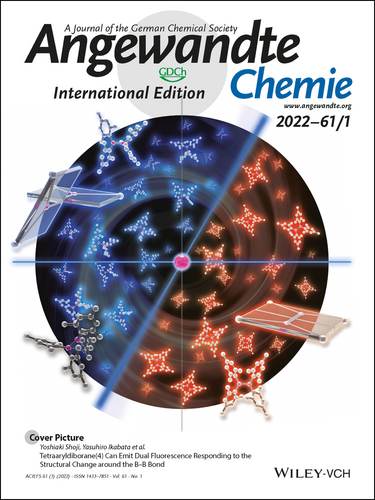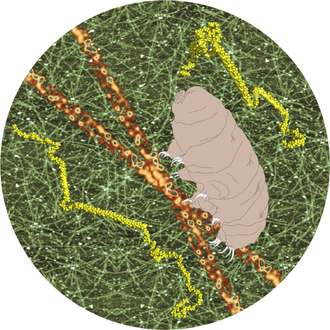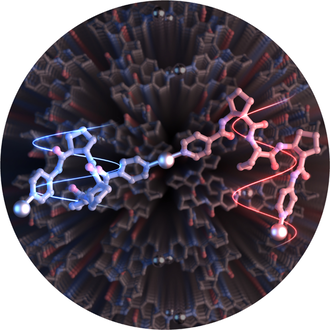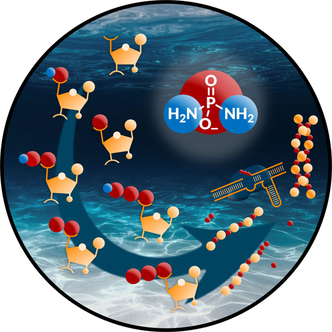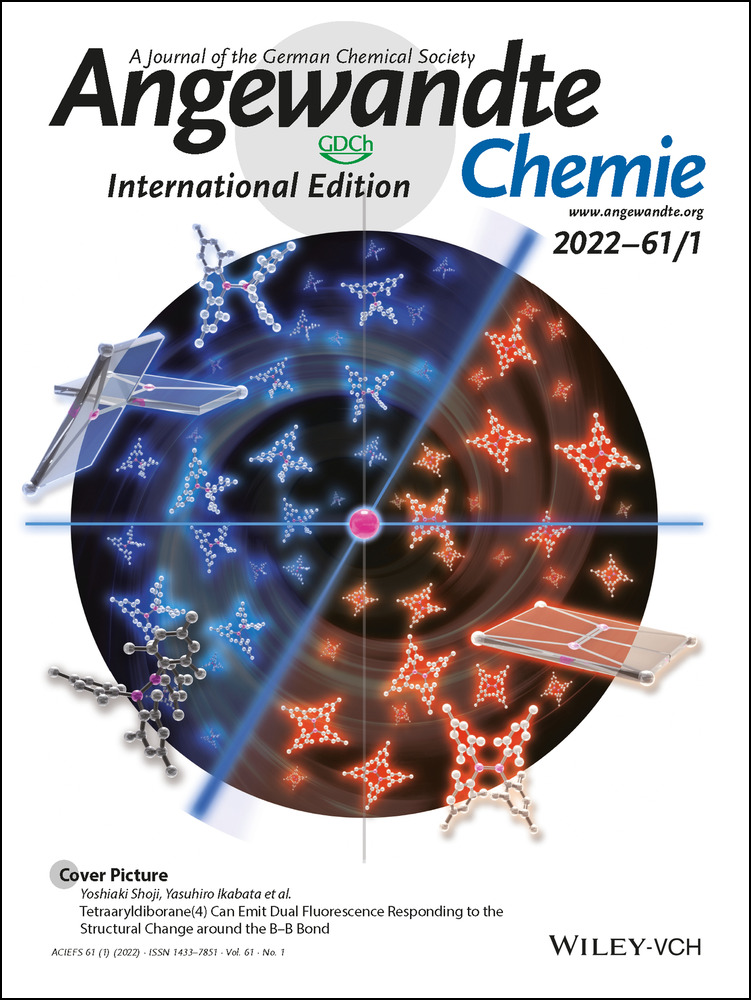Cover Picture: Tetraaryldiborane(4) Can Emit Dual Fluorescence Responding to the Structural Change around the B–B Bond (Angew. Chem. Int. Ed. 1/2022)
Graphical Abstract
The blue/orange dual fluorescence properties of tetramesityldiborane(4) are reported by Yoshiaki Shoji, Yasuhiro Ikabata et al. in their Research Article (e202113549). Theoretical calculations showed that the diborane(4) in the S1 state adopts a twisted or planar geometry, which is responsible for the blue or orange fluorescence, respectively. The relative intensity of the dual fluorescence is sensitive to the viscosity of the medium, highlighting the potential of the diborane(4) as a ratiometric viscosity sensor.
The blue/orange dual fluorescence properties of tetramesityldiborane(4) are reported by Yoshiaki Shoji, Yasuhiro Ikabata et al. in their Research Article (e202113549). Theoretical calculations showed that the diborane(4) in the S1 state adopts a twisted or planar geometry, which is responsible for the blue or orange fluorescence, respectively. The relative intensity of the dual fluorescence is sensitive to the viscosity of the medium, highlighting the potential of the diborane(4) as a ratiometric viscosity sensor.
Proteins
Foldamers
Prebiotic Chemistry
DNA Nanotechnology



